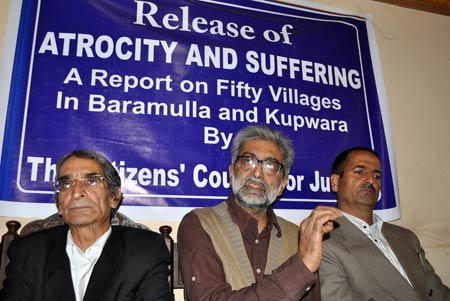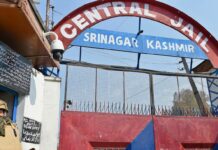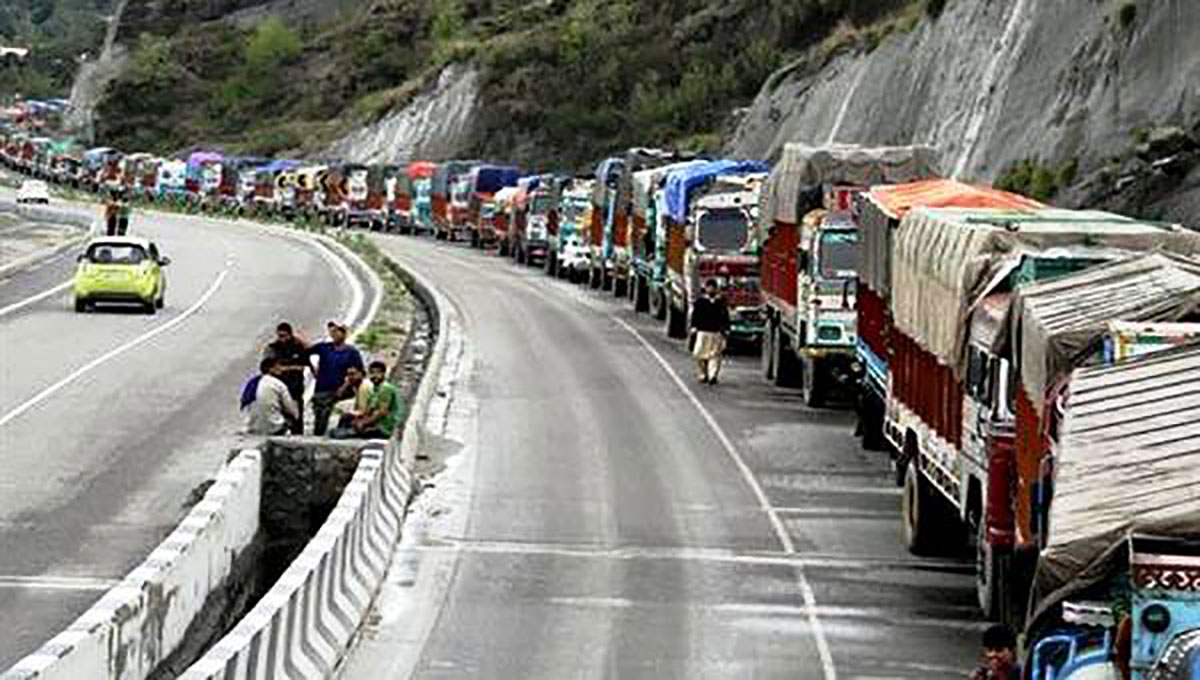Trapped in a vicious circle of violence, a community-based organisation has documented the atrocities committed by the state and non-state actors on the people in 50 villages of Baramulla and Kupwara districts over the last 23 years, SYED ASMA reports

For the first time in the history of Kashmir conflict, a group of individuals have conducted an exhaustive survey to document the atrocities and human rights violations inflicted on the people in north Kashmir’s Baramulla and Kupwara districts. A 36 page report titled ‘Atrocity and Suffering- A Report on Fifty Villages in Baramulla and Kupwara Districts of J&K’ was released in Srinagar on Thursday which contains gory details of how common people were killed, subjected to enforced disappearances, tortured, jailed and used as forced labourers over the last 23 years of conflict.
The report has been prepared by The Citizens’ Council for Justice (CCJ), a voluntary, apolitical community-based organisation formed in 2008 by torture survivors and former detainees from Baramulla and Kupwara. The organisation has surveyed 31 villages in Baramulla and 19 in Kupwara. The researchers surveyed 67000 adult males in these villages out of which 6888 were allegedly subjected to forced labour which includes different jobs from digging underground bunkers, cleaning huge Army camps, helping Army in detecting mines on the streets, accompanying them on their military operations inside the localities or in jungles, says Dr Riyaz Lone, a CCJ member and a PhD scholar of history at Kashmir University. In military operations, accompanying locals were used as human shields most of the times, he said.
“We had to start from somewhere. These areas have been ignored and factual reporting was needed. Our aim was to work for individuals and collective justice for those who have been victimized,” a group member said. The group is planning to expand their sample size and cover other areas in future.
The report was released by Parvez Imroz, a Kashmir based human rights lawyer and Gautam Navlakha, a Delhi based human rights activist who appreciated the efforts of CCJ and said such activities should be encouraged in other areas also. Peer Siraj-ud-Din, the chairperson of CCJ and Dr Riyaz Lone were also present on the occasion.
“Involving locals as researchers within these villages has helped them to extract valuable inputs and document ‘actual facts’,” Peer said. “Local villagers helped us to make a list of those killed, disappeared, tortured, jailed and even helped us to know the number of people who were used as forced labourers in the last 23 years” says Dr Lone said.
The report has stated that around 437 people were killed by the government agencies and militants out of which 192 were civilians. Out of those killed, 421 were men and 16 were women while as 65 people had disappeared in the twin districts. “320 were killed by various government agencies, 84 by militants and 33 by unidentified gunmen. Out of 320 people killed by government agencies, 114 were civilians, 201 were militants, one belonged to state police and four were surrendered militants” the CCJ report reads.
“It is a time when Kashmir is being portrayed as peaceful and normal but reports like these talk about the ground reality and reflect the actual face of Kashmir. The efforts put up by CCJ should be appreciated and encouraged. They have summed up even the minute details of these areas like presence of bunkers, religion of people who were killed, torture places, damages caused to various religious structures, etc.,” said Navlakha.
Recalling the harsh memories, most torture survivors did not want to be identified “due to fear of reprisal”, the CCJ researchers say. The report reads, “Many people complained of harsh beating by sticks, electrocution of private parts, rolling of wooden rollers over the legs, stretching of legs and arms, dipping the head in water bucket, burning of skin by cigarette bits or by blue lamp, denial of sleep, hanging upside down, etc as various forms of torture used by forces.”
The report has termed ‘beating’ as ‘minor torture’ and it has not included those cases in the statistics of torture. Most villagers were allegedly found beaten up by armed forces at least once. “Around 40 people were killed in the custody of armed forces and 49 were disabled. The youngest killed in custody was 17-year-old while the oldest was 70-year-old. Among them, 20 were civilians, 18 were militants and two were ex-militants,” the report says.
The CCJ team studied the presence of 19 camps of armed forces which occupy almost 2047 kanals of land. There are about 126 armed forces bunkers. “Each bunker acts like a small camp and is responsible for surveillance, crackdowns, arrests, tortures, killings, disappearances, custodial killings and harassment,” the report says, “These camps are responsible for controlling lives and are used by the state to fragment the population.” The group has not documented atrocities committed on women due to absence of women researchers.















